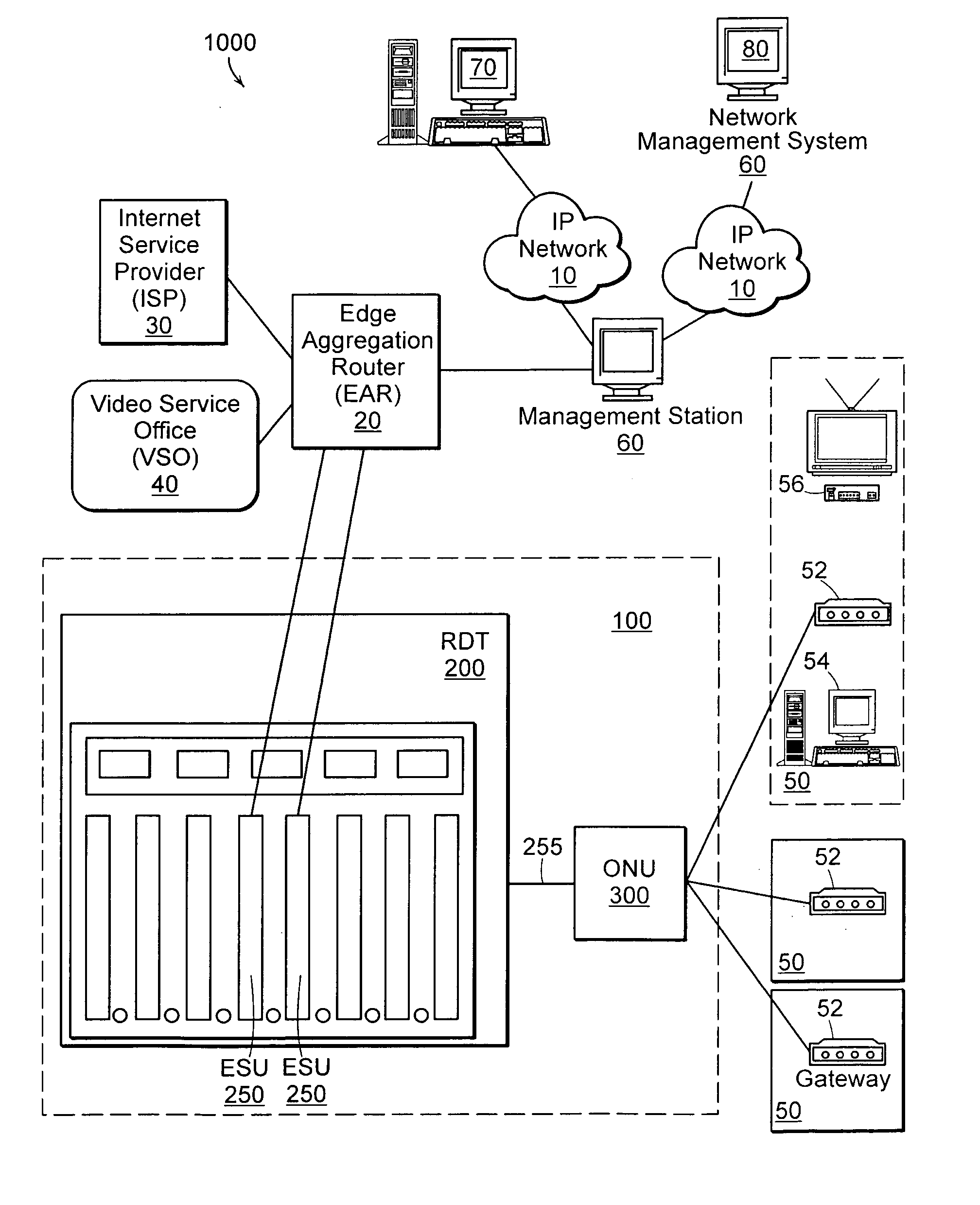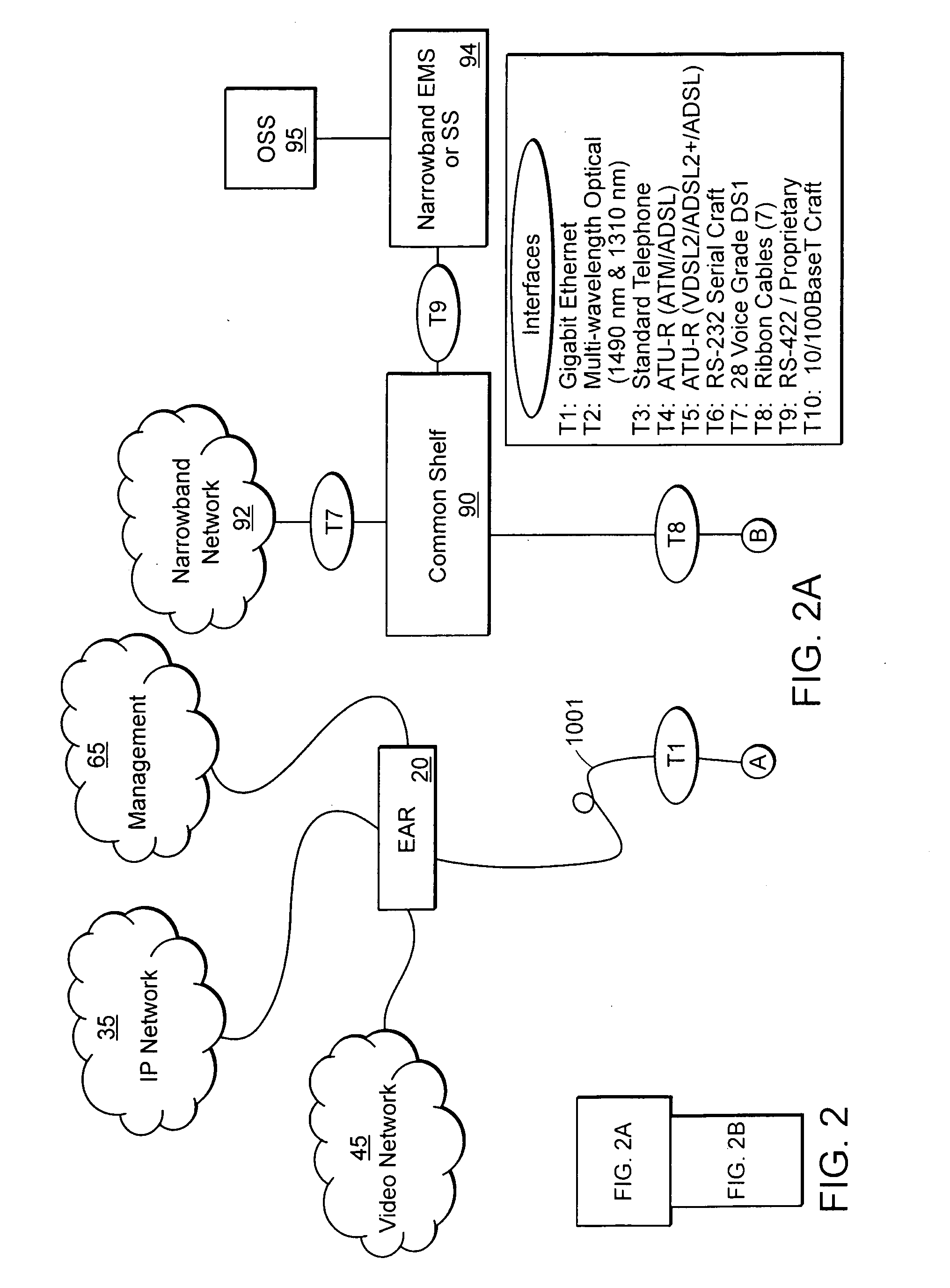Method and system of network clock generation with multiple phase locked loops
a technology of network clock and lock loop, which is applied in the direction of digital transmission, data switching network, electrical equipment, etc., can solve the problems of limiting the ability to receive and transmit high-speed data signals along with traditional quality voice signals, access parts of existing access networks are not well-matched to the type of information, and user demand to shi
- Summary
- Abstract
- Description
- Claims
- Application Information
AI Technical Summary
Benefits of technology
Problems solved by technology
Method used
Image
Examples
Embodiment Construction
[0034] A description of preferred embodiments of the invention follows.
[0035] According to an embodiment of the present invention, a system or corresponding method increases available bandwidth for transmission of data, video, and audio to a customer, or sometimes a curb local to a customer, within a network. The system may include multiple network nodes. In one embodiment, first network node in the system converts a first optical communications signal to a corresponding first electrical signal with an asynchronous, packet-based format. The first network node processes the first electrical signal in a corresponding, asynchronous, packet-based manner, and routes the first electrical signal to a second network node among a group of secondary network nodes. This second network node converts the first electrical signal to a second optical signal and routes the second optical signal to a third network node among a group of tertiary network nodes. The third network node converts the seco...
PUM
 Login to View More
Login to View More Abstract
Description
Claims
Application Information
 Login to View More
Login to View More - R&D
- Intellectual Property
- Life Sciences
- Materials
- Tech Scout
- Unparalleled Data Quality
- Higher Quality Content
- 60% Fewer Hallucinations
Browse by: Latest US Patents, China's latest patents, Technical Efficacy Thesaurus, Application Domain, Technology Topic, Popular Technical Reports.
© 2025 PatSnap. All rights reserved.Legal|Privacy policy|Modern Slavery Act Transparency Statement|Sitemap|About US| Contact US: help@patsnap.com



